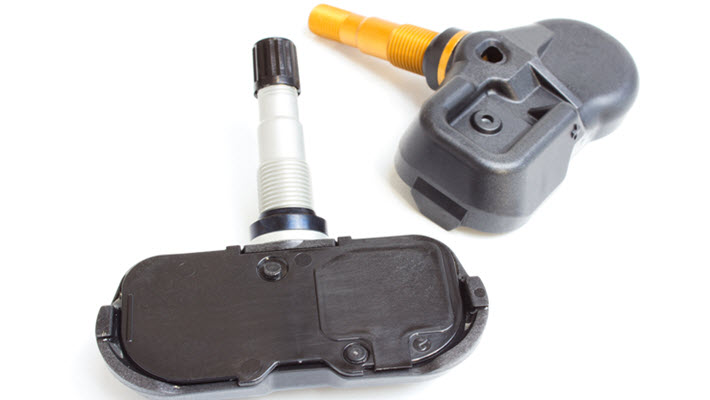Preventive maintenance is critical when you own a car. Staying on top of routine oil changes and fluid levels are one way to get your car into a trusted mechanic shop as often as possible, giving room for opportunities to catch problems before they become real issues. One of the preventive maintenance tasks that your mechanic should be sure to check up on is the health of your tires. Tires can become worn, air pressure can be low or high, and your car can be at significantly higher risk for a dangerous blowout on the freeway. The tire pressure monitoring system, or TPMS, is a system that keeps tabs on how much pressure your tires are filled with. If there is too much or too little pressure in your tires, this can become seriously problematic; both instances can cause a flat tire at an inconvenient or dangerous time—then again, when IS there a convenient time for a blowout?
Your tires may need more air
Your TPMS warning light may come on if it determines that your tires need more air. You can fix this problem by adding more pressure to your tires. Before doing so, you should look at the interior driver’s side of your vehicle in the frame of the door for the correct tire pressure; sometimes this is also located in your manual, which provides an accurate account of how to fill your tire to the appropriate amount. In order to keep your TPMS warning light from coming on, you should always keep a tire pressure gauge in your car. Any time you stop for gas, you should check your tire pressure. When the pressure is low in your tires, the surface area of the tire that meets the ground is increased. Especially when the pavement becomes hot, this can cause significant wear to your tires. Furthermore, there is more area for nails and other sharp objects to become lodged in your tire, either slowly leaking the air out or violently popping the tire. If this occurs while driving, it can be terrifying.
Too much pressure in tire
Your TPMS warning light may also come on if it notices that there is too much pressure in your tire. Too much pressure can cause bubbling on your tires, which also compromises the integrity of the tire. It is important to know what exact pressure your tires should be filled with because over-filling your tires with air can be just as damaging and dangerous as not having enough pressure in your tire. Again, you can find the accurate pressure to fill your tire with in your car’s owner’s manual, and you can even keep a reminder somewhere in your car so that you never forget. You can stop at any gas station to fill the tires yourself, or you can simply take your car to the nearest mechanic or service shop that can fill the tires for you. In either case, it is important that you always check the pressure with your own gauge after before and after you fill them.
Take help from professionals
After you fill the tires, the light may go off by itself, depending on what type of vehicle you have. Otherwise, you will need to reset the tire pressure sensor; professionals should do this if you do not have any automotive knowledge. How you go about resetting the sensor will also be determined by what type of vehicle you have. For certain models this is something you can do on your own at home without tools, but for other vehicles it requires some expertise.

Wrap up
Whether your tire pressure is low or high, it can seem like a nuisance to keep up with. Part of owning a car is the duty to protect your investment in order to save yourself money in repairs. While the cost of a car alone is expensive, maintaining the car can become even more costly if it is not done routinely, and by professionals. Finding a trusted auto mechanic who does excellent work can greatly impact the life expectancy of your car. Spending the minimal fees to have your car serviced and checked out can save you money in the long run. When the TPMS warning light goes off, make sure you bring it to an automotive specialist.

